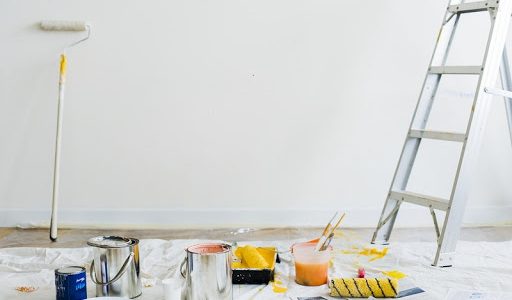Painting and decorating your walls, ceilings, and external fixtures can go some way to giving your home a fresh and attractive look. If you are thinking of embarking on a decorating project in the near future, below are some practical tips to help you navigate what, potentially, can be a messy affair.
Things You Can Do
- When it comes to painting your home, preparation of the surface is essential. Preparing the work area properly can ensure an effective bond of coating to the substrate and reduces the chance of paint failure, saving you time and money in the future.
- Identify and repair imperfections on the surface, this includes filling in any holes or cracks. Sand down the substrate to remove any old flakes of paint. The sanding process helps to smooth the surface and improves the paint and surface bond.
- Before you begin to paint, make sure all substrates are free from dirt and dust. The last thing you want is for grime to get caught in between the paint and surface bond. This is sure to ruin the first-class finish that you are looking for. In addition, make sure all furniture and flooring are covered with dust sheets to limit the mess paint can cause.
- Utilize a primer or undercoat, particularly if you are painting a new or bare surface. Although priming may seem like a wasted effort, paint primer helps to improve adhesion, hide existing surface stains, and provide more durability to the final finish. If you are unsure which primer is most suitable for your substrate, please speak to your local expert
- Choose a suitable paint for the surface. Previously, oil-based paints were the “go-to” product for painting external surfaces. However, emulsion or water-based paints are now commonly used for internal and external surfaces. The constitution of emulsion paint can now be altered to vary the finish. Popular finishes include matt, eggshell, silk/satin, and gloss. If you are unsure which paint best suits the surface, you are decorating talk to your local expert.
- Matt – Matt finish provides a dull and velvety finish. This finish is suitable for surfaces with a number of imperfections. The disadvantage is this surface finish can stain easily
- Eggshell – Eggshell paint provides a subtle sheen. The finish is similar to that of an eggshell, hence the name. Eggshell paint is hard-wearing and does not pick up dirt easily.
- Silk/Satin – Silk/satin paints are classified as mid-sheen finishes. The paint reflects a small amount of light providing a glow. This paint is easy to clean and is often used on walls and ceilings in kitchens and bathrooms.
- Gloss – This type of finish is popular when painting wood and metal substrate. The paint reflects ample amounts of light giving a high sheen and glowing finish. Gloss is best used on perfectly smooth surfaces. Gloss is durable and stain-resistant.
Conclusion
For those who feel daunted and stressed by the idea of completing a painting and decorating project, why not contact your local, professional painter, and decorator. You can be confident that the finish will be first-class, saving you time and money in the future. For further painting and decorating tips and to see our extensive range of painter and decorator solutions visit http://www.rotherhampd.co.uk.

